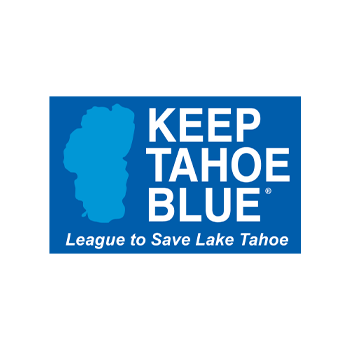
California Tahoe Alliance
Tahoe's advocates in Sacramento
Each year the Tahoe Basin sees 15 million annual visits, including hundreds of thousands on busy summer weekends. The region attracts visitors from every region of our state, including many Californians who own homes in the area. The resident population is approximately 55,000.
Wildfire, smoke, and extreme weather events such as winter storms and summer heat, threaten the fragile ecosystem. Meadows, wetlands, and streams play a major role in the region’s ecosystem to protect Lake Tahoe’s water clarity. Lake Tahoe is under extreme stress from years of drought and the catastrophic Caldor Fire, followed by a record breaking snow pack. Tahoe’s pristine water quality and natural resources are uniquely vulnerable to the impacts of the warming climate and it is therefore essential that we continue to build the tools it needs to be resilient.
OUR PURPOSE

The California Tahoe Alliance (CTA) is a group of 11 organizations including utilities, local governments, non-profits, and community organizations. CTA is committed to working with policymakers to address pressing issues facing the Tahoe Region, including:
Restoring the lake’s clarity in the face of climate change
Promote equitable access to recreation opportunities
Reducing wildfire risk and promote forest health
Increasing water and transportation infrastructure
Creating resilience for the Tahoe Basin’s ecosystems
Managing demands on recreation in a fragile watershed
OUR WORK
Addressing Climate Impacts
This year, the California Tahoe Alliance is advocating for passage of a climate resilience bond that includes a fair share of funding for Lake Tahoe to prepare the region’s treasured natural resources for climate impacts like wildfire, extreme precipitation, drought, and warming temperatures.
These funds are crucial to provide a California match for funds from Nevada, the federal government, and the private sector for the Environmental Improvement Program (EIP).
We also look to ensure that funding be directed to the California Tahoe Conservancy, as a vetted and trusted state agency to distribute funding to priority projects that will achieve climate resilience goals as identified in adopted regional climate, wildfire, invasive species, and other plans.

Wildfire Preparedness
In August 2021, the Caldor Fire became the largest wildfire ever to burn in the Tahoe Basin. The fire burned approximately 10,000 acres and impacted the Basin's largest sub watershed in the Upper Truckee River.
Vegetation that once covered the steep slopes in the burn scar has been replaced with charred trees, ash, and bare soils in some areas of the Tahoe Basin, $6 million is requested to be allocated to the California Tahoe Conservancy to leverage and match the $10 million in federal funds appropriated through the Lake Tahoe Restoration Act.
The California Tahoe Alliance supports SB 1088 (Alvarado-Gil) that would establish state matching funds to enhance water infrastructure across the state. Specifically, the bill would create a Rural and Small Community Fire Resilience Program within the Office of Emergency Services to work in coordination with the Department of Water Resources, the State Water Resources Control Board, and other state entities to develop a program that would improve water system infrastructure, as prescribed.
Funding requested is for projects that are shovel ready, CEQA/NEPA ready, and will upsize water systems in the wildland urban interface by installing fire hydrants and new storage tanks, upsizing waterlines, emergency generators, and critical interties between systems.

Reducing Traffic Congestion & Enhancing Transportation
Improving transportation in Tahoe is a top priority as traffic congestion and a lack of parking negatively impact lake clarity and the resident and visitor experience. Personal car travel dominates how people get to and from the Tahoe Basin. In 2017, California and Nevada convened a bi-state consultation with public and private partners to accelerate transportation improvements in Lake Tahoe.
The Transportation Action Plan that identifies priority projects and services found the need for $400 million over 20 years. California must continue toinvest a connected transportation system that prioritizes transit, trailsand technology to move people aroundthe region as efficiently as possible.

Aquatic Invasive Species
Human-introduced aquatic species (AIS) have overrun portions of Tahoe's waters, altering its cherished ecosystems, deteriorating lake clarity, and paving the way for further invasive species proliferation.
The warming waters due to climate change are expanding shoreline habitats, providing additional breeding grounds for AIS infestation. Funding is needed to address these challenges, specifically for the following initiatives:
- Inspections: Establish permanent watercraft inspection stations to stop the introduction of AIS
- Monitoring: Continue to expand lake-wide prevention, control, and monitoring of existing AIS populations and potential new outbreaks.
- Education: Implement and expand mobile clean, drain dry stations and education for non-motorized recreators.

Get your questions about Tahoe or the CTA answered, or request a meeting or Tahoe tour by contacting us.
OUR MEMBERS










